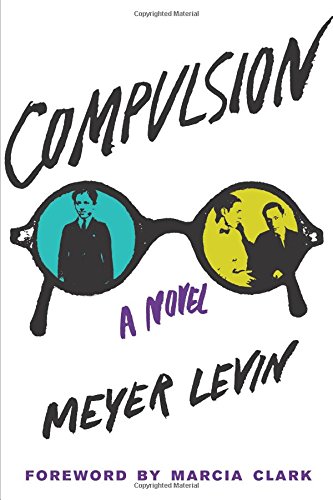Books |
Compulsion
Meyer Levin
By
Published: Jan 16, 2023
Category:
Fiction
Let’s say that someone wants to kill four people, all in the same house, so quickly that no one can confront him — and then disappear into the night, never to be identified and arrested. He’s a doctoral candidate in criminal justice and has been considering a study about the emotional and psychological conditions of would-be criminals — the prospect of a clean getaway is as satisfying as the murders for him. How will he do it? No gun, too noisy. Okay…a knife. But he leaves its sheath behind. He forgets that security cameras are everywhere and that his cellphone creates a record of his locations and the times he’s there. So Bryan Kohberger, to his great surprise, gets arrested for the murders of four University of Idaho students in their home near campus. Like many of you, I read a million words as the police built the case against Kohberger. I haven’t seen a single mention of Leopold and Loeb, who also set out to commit the perfect crime… and didn’t.
Leopold and Loeb — unless you’re a late-life Boomer, the names don’t ring a bell. Here’s the cheat sheet: In 1924, Nathan Leopold and Richard Loeb kidnapped and killed 14-year-old Bobby Franks in Chicago, then demanded that his parents pay a $10,000 ransom. They didn’t need the money. They were rich. And brilliant students at the University of Chicago. They’re great chartacters, and Meyer Levin told their story in his best-selling 1956 novel, “Compulsion.”
Why did Artie Straus (in the novel, he’s Loeb) and Judd Steiner (in the novel, he’s Leopold) kill? No reason. Which was exactly the reason. They were drunk on Nietzsche’s concept of the “superman.” They believed they were above all laws. The murder — the perfect murder — was merely an “experiment.”
Massive publicity followed every development of the investigation. For supermen, the killers made fatal errors, but then they had “issues” — sexual and psychological — that led police to them. They were caught, defended by Clarence Darrow, convicted and sentenced to “life plus 99 years.” Loeb was killed in prison. Leopold was paroled after three decades in jail.
Meyer Levin had a special connection to this story — he was also a student at the University of Chicago, he knew Leopold and Loeb, he was a cub reporter covering the crime. All of that gave him the framework for “Compulsion.” Thirty years after the crime, he created an alter-ego, “Sid Silver,” who has been assigned to interview Judd Steiner on the eve of his release from prison. Sid was wise as a college kid, is wiser still as a veteran writer — he weaves his own love story and a sharp appreciation of homosexual obsession into the crime plot. And when he gets to the trial, he smartly quotes Clarence Darrow’s cross-examinations and summation. “Compulsion” is a long book (456 pages), but the pages turn themselves. [To buy the paperback from Amazon, click here. For the Kindle edition, click here. For the MP3 audio download,, click here.]
Of course there was a movie. I saw it when I was just on the verge of adolescence — Bobby Franks’ age. I’ve been haunted ever since.
One caveat: The last 200+ pages are a closely reported, lightly fictionalized account of the Leopold-Loeb trial. They’re heavy on the testimony of what used to be called “alienists.” Some of that professional testimony is insightful and revealing. But all of it is quite a lot. I started to skim. And then I started to skip. For me, the attraction of “Compulsion” is in the first half: The crime was insane. One of the killers is gay, closeted and obsessed; the other is a sociopath. The rich parents are indulgent and clueless. Media is a hungry beast.
For half a book and then some, “Compulsion” isn’t just another over-hyped story about yet another “crime of the century.” It’s the gold standard. And it presents clues that might help us understand the killer of those four students.
BONUS: THE ENTIRE MOVIE


